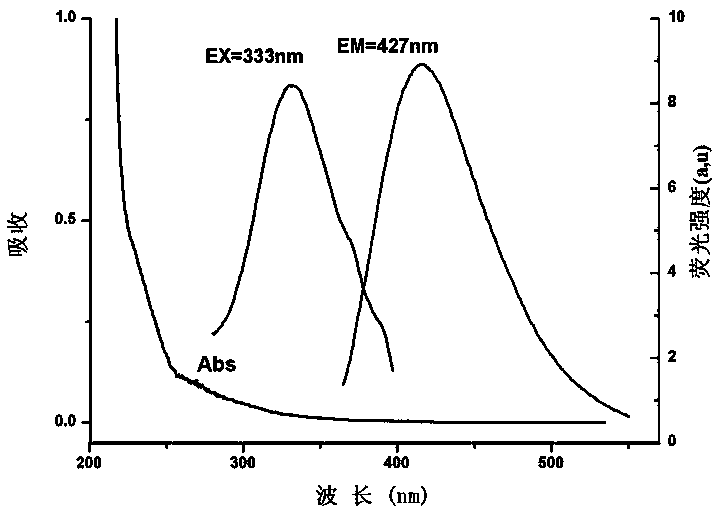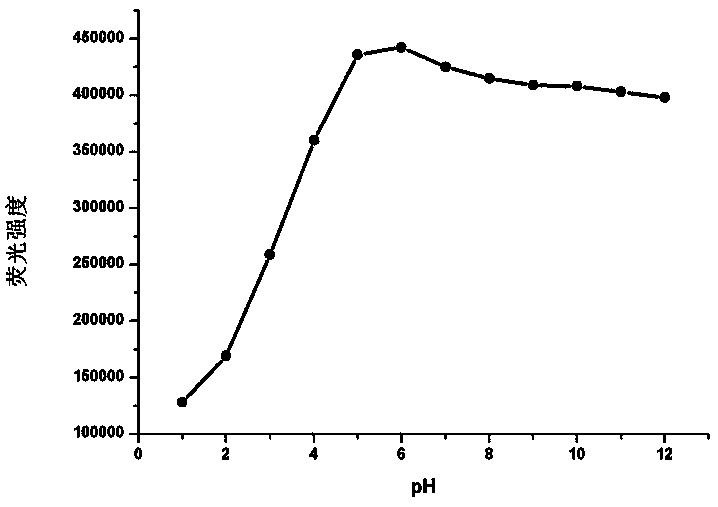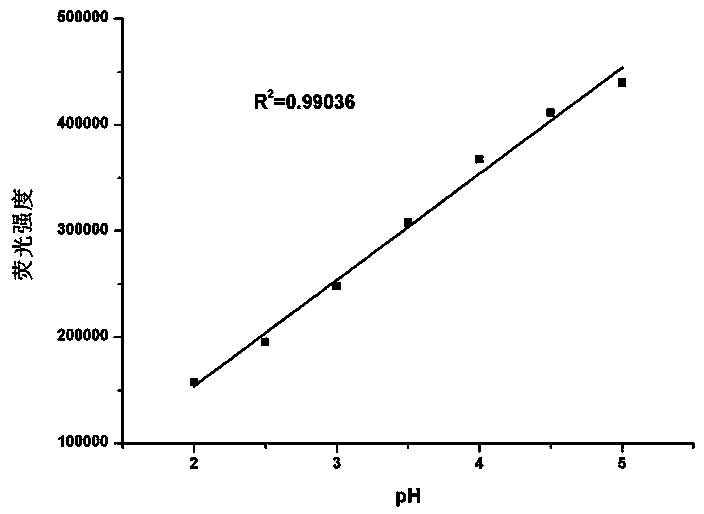Application of methyl-2-imidazoline as pH value and Fe<3+> dual-functional fluorescent probe and fluorescent probe prepared from methyl-2-imidazoline
A methyl imidazoline, fluorescent probe technology, applied in the application field of pH probe and metal ion recognition, can solve the problems of complex synthesis process, high toxicity, self-aggregation, etc., and achieves good selectivity, less toxic and side effects, and water solubility. high effect
- Summary
- Abstract
- Description
- Claims
- Application Information
AI Technical Summary
Problems solved by technology
Method used
Image
Examples
Embodiment 1
[0027] The embodiment of the present invention uses 2-methylimidazoline as a fluorescent probe, and its chemical structural formula is
[0028]
[0029] The 2-methylimidazoline with a specific structure is synthesized according to the method described in the literature "Synthetic Communications, 1997, 27, (15): 2701-2707", and belongs to a published chemical substance, 2-methylimidazoline As an important chemical product intermediate, imidazoline is widely used in medicine, veterinary medicine, dyes and other fields, but there is no data to find its excellent fluorescence properties and its application in pH detection and ion recognition. 2-Methylimidazole The application of morphine in this field is still the first.
[0030] At room temperature, the relative fluorescence quantum yield of 2-methylimidazoline was determined using quinine sulfate (φ=0.54) as a reference substance. Comparing the integrated fluorescence intensity of the dilute solution and the absorbance of th...
Embodiment 2
[0038] The determination of the linear relationship of the fluorescent probe in the range of pH=2.0~5.0:
[0039] Refer to Example 1 for the preparation of the solution, the adjustment steps of the pH value and the acquisition of the fluorescence spectrum. Take 2-methylimidazoline aqueous solutions with pH=2.0, 2.5, 3.0, 3.5, 4.0, 4.5, 5.0 respectively and measure their fluorescence emission spectra. Depend on image 3 It can be seen that the fluorescence intensity of the solution with pH equal to 2.0-5.0 has a linear relationship at 427nm, and the linear correlation coefficient R 2 =0.99036, its wider pH detection range makes it more widely used.
Embodiment 3
[0041] Fluorescent probe 2-methylimidazoline solution on Fe 3+ The selectivity test is carried out as follows:
[0042] 1) To simulate a normal physiological environment, prepare 100mL of phosphate buffer solution with a pH of 7.4, add 0.08g of 2-methylimidazoline to make the concentration reach 10mmol / L, and stir well.
[0043] 2) Take 2mL of the solution to be tested and place them in fluorescent quartz cuvettes, and add 20µL of metal ions (Al 3+ , Br 2+ ,Co 2+ , Cu 2+ , Fe 3+ , Hg 2+ , K + , Ni 2+, Zn 2+ ), and detect the change of the fluorescence emission spectrum of the solution immediately after mixing evenly, the results are as follows Figure 4 shown. Depend on Figure 4 It can be seen that, compared with the blank sample, when adding Fe 3+ After ions, the emission peak of the fluorescent probe solution at 427nm is significantly reduced; however, other metal ions, such as Al 3+ , Br 2+ ,Co 2+ , Cu 2+ , Hg 2+ , K + , Ni 2+ , Zn 2+ After that, the fl...
PUM
 Login to View More
Login to View More Abstract
Description
Claims
Application Information
 Login to View More
Login to View More - R&D
- Intellectual Property
- Life Sciences
- Materials
- Tech Scout
- Unparalleled Data Quality
- Higher Quality Content
- 60% Fewer Hallucinations
Browse by: Latest US Patents, China's latest patents, Technical Efficacy Thesaurus, Application Domain, Technology Topic, Popular Technical Reports.
© 2025 PatSnap. All rights reserved.Legal|Privacy policy|Modern Slavery Act Transparency Statement|Sitemap|About US| Contact US: help@patsnap.com



